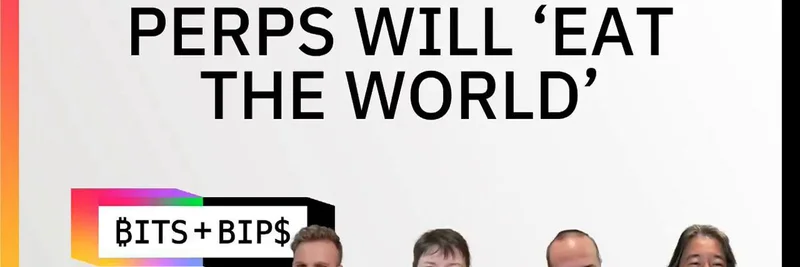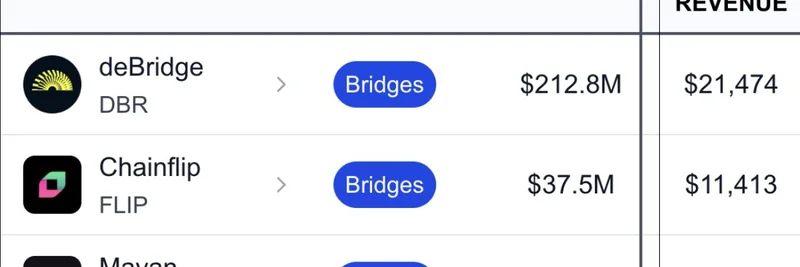In the ever-evolving landscape of cryptocurrency, a recent discussion on X (formerly Twitter) by Laura Shin, a prominent figure in the crypto space, has sparked significant interest. The thread, titled "Perps Will 'Eat the World'", delves into the transformative potential of perpetual futures (perps), tokenized stocks, and altcoin ETFs. This conversation, featuring insights from industry experts, highlights the convergence of traditional finance (TradFi) and crypto, a trend that is reshaping market dynamics.
The Convergence of TradFi and Crypto
The discussion begins with an exploration of how traditional financial instruments are increasingly intersecting with cryptocurrency markets. Robinhood's introduction of tokenized stocks and its own Layer 2 (L2) solution is a prime example. Tokenized stocks allow investors to trade shares of companies on blockchain platforms, potentially offering greater liquidity and accessibility. Robinhood's L2 aims to enhance transaction speeds and reduce costs, making it easier for retail investors to participate in this new market.
This convergence is not just theoretical; it's happening now. The thread suggests that perps, a type of derivative contract that doesn't expire, could "eat the world" due to their flexibility and potential to disrupt traditional futures markets. Unlike standard futures, perps allow traders to maintain positions indefinitely, paying a funding rate to balance the market. This feature makes them particularly attractive in volatile markets like crypto.
Why Perps Are Gaining Traction
Perpetual futures have been gaining traction because they offer several advantages over traditional futures. Firstly, they provide high leverage, allowing traders to amplify their exposure to price movements without the need to roll over contracts. This is particularly appealing in the crypto space, where price volatility can lead to significant gains or losses.
Secondly, perps increase liquidity. Since there's no expiration date, there's a continuous market for these contracts, which can lead to tighter spreads and better pricing for traders. The thread mentions BitMEX's popularization of perps, like the XBTUSD (Perpetual Bitcoin Contract), as a case study of how these instruments can dominate trading volumes.
Tokenized Stocks and Altcoin ETFs
Another key point of discussion is the role of tokenized stocks and altcoin ETFs in this convergence. Tokenized stocks, as mentioned, allow for the representation of traditional stocks on blockchain platforms. This can democratize access to markets that were previously inaccessible to many investors. For instance, Robinhood's approach ensures that corporate actions, like stock splits or dividends, are reflected in the tokenized assets, maintaining parity with traditional markets.
Altcoin ETFs, on the other hand, are poised to bring a new wave of investment into the crypto space. These exchange-traded funds, which track the performance of alternative cryptocurrencies, could attract institutional investors who are hesitant to directly hold digital assets. The thread suggests that we might be heading into an "altcoin ETF summer," indicating a surge in interest and investment in these products.
The Role of Staking and Market Makers
The conversation also touches on the importance of staking and market makers in this evolving landscape. Staking, particularly in the context of ETFs, is critical because it allows investors to earn yields on their holdings. This is especially relevant for Ethereum-based assets, where staking can provide additional income streams.
Market makers, like those associated with Jito's yield model, play a vital role in ensuring liquidity and stability in these markets. They facilitate trading by providing buy and sell orders, which helps maintain market efficiency. The thread highlights how these elements are interconnected, with staking and market making contributing to the overall health of the crypto ecosystem.
Implications for Traditional Finance
The convergence of TradFi and crypto raises important questions about regulation, ethics, and the future of financial markets. As cryptocurrencies and blockchain technology challenge long-held assumptions, regulators are forced to reevaluate their approaches. Financial institutions, too, must adapt or risk being left behind.
The thread suggests that perpetual futures could sneak their way into traditional finance, potentially offering a more efficient alternative to existing instruments. This could lead to a paradigm shift in how financial products are designed and traded. Moreover, the discussion on interest rates and their impact on crypto prices underscores the interconnectedness of these markets. Lower interest rates, for instance, tend to favor crypto assets by increasing liquidity and encouraging risk-taking.
Conclusion
The "Perps Will 'Eat the World'" thread offers a glimpse into the future of finance, where crypto and traditional markets are increasingly intertwined. Perpetual futures, tokenized stocks, and altcoin ETFs are not just buzzwords; they represent a fundamental shift in how we think about investing and trading. As these trends continue to develop, they will undoubtedly shape the financial landscape for years to come.
For those interested in staying ahead of the curve, understanding these dynamics is crucial. Whether you're a blockchain practitioner, an investor, or simply curious about the future of finance, keeping an eye on these developments is essential. The convergence of TradFi and crypto is not just a trend; it's a revolution in the making.
This article, optimized for SEO and written in a conversational tone, provides a comprehensive overview of the discussed trends, ensuring readability and engagement for a broad audience.


